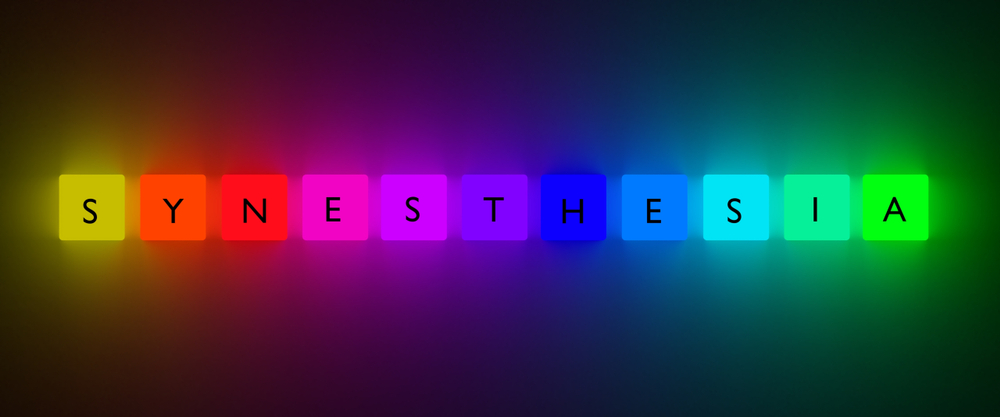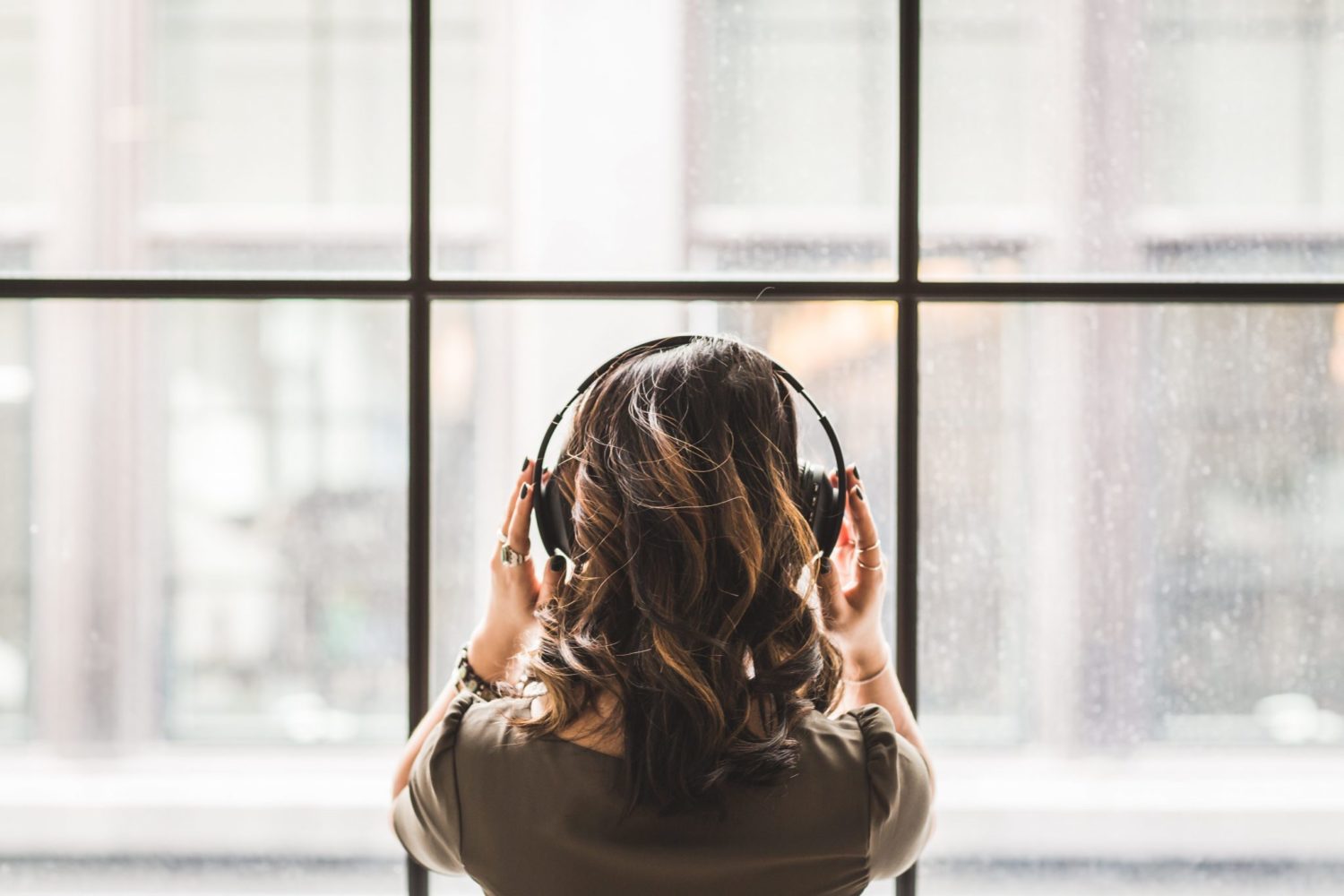
Synesthesia: Can You Hear Colors?
What is it like to hear colors and see sounds – people who have synesthesia might be able to give a little insight into that. Imagine the world full of new possibilities, sounds, images, and tastes. The way you are able to perceive and sense nature is so different from everybody else. You can say that the sky tastes like plums. When you hear Vivaldi’s four seasons on the piano, vibrant colors appear from every possible direction, representing spring, summer, fall, and winter. You are able to differentiate months of the year by colors and different smells by taste. Some of these are just examples. If you are able to relate to any of them, you might have synesthesia.
What is synesthesia?

Scientists consider synesthesia to be a neurological and perceptual condition. It comes from Greek words that represent ‘togetherness and sensation’. It is quite extraordinary and brings a whole different understanding to what surrounds us. In fact, people who have synesthesia most often than not, embrace it. They do not want to ‘cure’ the condition, per say. To them, the world is full of tastes and colors and sounds, depending on their particular type of synesthesia, of course. That’s how they’ve always experienced the world. They understand that Monday to have a green color, but Saturday more of a purple one and it makes sense to them.
Imagine looking at the sun each and every day and seeing that it’s yellow and one day wakes up and realize it’s a bland gray. That’s what it would be like for a synesthetic to lose their sense and understanding of the world. They would not only be very confused for a long period of time. No, despite that, they’d probably also feel sadness and grief for the loss of all of the beautiful imagery, sounds smell and touch that they will never experience again.
It’s quite difficult to understand synesthesia without experiencing it. A sky that tastes like blueberries or colors appearing when you hear music? That sounds crazy to anybody who has not experienced it themselves. Synesthesia, however, is not limited to just these people though. A lot of researchers looked into synesthetic occurrences in the regular population. These studies found that many are actually able to experience synesthesia. Sometimes they don’t even realize they are doing it.
Perhaps, in order to understand it better, you should experience a little touch of what synesthesia can be. This is what scientists call the McGurk effect
The McGurk effect
For a very long time, researchers understood speech as an auditory perception only. Now know the McGurk effect where there is an interplay between auditory and visual stimuli in the perception of speech. It is somewhat an illusion. Scientists, Harry McGurk and John Macdonald coined the effect in their 1976 study. It seems to be that when speech is paired with visual stimuli, a very extraordinary multi-sensory illusion happens.
They achieved this surprising effect by making a recording of a person voicing a consonant. After that they put the recording with a face, however, that face was expressing a different consonant. When the voice recording was heard by itself, the participants recognized it for what it was. However, when McGurk and Macdonald paired the voice recording along with a face expressing an incongruent sound – the participants heard a different sound. That sound ended up being the combination of the voice recording and the visual face articulation. The McGurk effect shows an absolutely astounding example of multisensory integration and how both, visual and auditory information can integrate and result in a unified experience.
If you can imagine, a lot of researchers found the illusion quite interesting and attempted to replicate it with different populations and conditions. What they found was quite astounding. Summerfield & McGrath found in their 1984 study that the effect happens with the use of vowels and not just consonants. The McGurk effect is present in pre linguistic infants according to the 1997 study by Rosenblum, Schmuckler & Johnson. Astonishingly enough, the effect even worked across a variety of languages which Massaro, Cohen, Gesi and Heredia showed in their 1992 study.
Synesthesia and the McGurk effect
It seems that even people who do not have the condition fall for the McGurk effect. The effect is very strong. Even when you know what to expect from it, you still cannot change it. When you think about it, it makes sense. The world we live in is full of senses and a variety of experiences. We do not just perceive sound by itself, or cannot look at something in a complete silence. There is always an ongoing integration of senses that happens all around us. It is no wonder that sometimes in our lives we are able to experience a synesthetic episode.
Types of Synesthesia
Synesthesia can appear in a variety of forms and types. In fact, researchers have been able to find over seventy types of synesthesia. We characterize the different varieties by what type of sensation they are able to cause and where that sensation came from. Here are some of the more common ones:
- Number-Form Synesthesia: those who have this type of synesthesia are able to perceive numbers as mental maps. That means that these people will put the numbers in certain positions in space that will form a mental map. Whenever a person thinks of a number, a mental map will appear in their mind. Francis Galton introduced this type in his ‘The visions of sane persons’ work.
- Lexical-Gustatory Synesthesia: people with this type will experience different tastes that correspond to specific words or phonemes. Badminton could taste like mashed potatoes but suitcase will taste like a chocolate cake. Quite a fun type, this one!
- Grapheme Synesthesia: this one emerges with perceiving numbers and letters as different colors. This is one of the most common types of synesthesia. Interestingly enough, different people experience different colors in association with numbers and letters. Some commonalities occur. Letter ‘A’ often appears red for some reason.
- Personification: A variety of ordered sequences will show up as different personalities. For example, Friday can be a happy go-lucky girl who enjoys dancing while Monday is an angry and bitter old man. Do you see any connection with real life?
- Chromesthesia: people perceive sounds as a variety of colors. There is a variety of different experiences within this type with some people only perceiving colors during spoken speech and others seeing them during musical pieces. This type is quite common among musicians.
- Misophonia: this one is not a particularly nice type of synesthesia. People who have this type experience very negative emotions when it comes to sounds. Examples of experienced emotions can be anger, disgust, sadness etc. Fortunately, this is one of the rarer types and it happens due to a disturbance between the limbic system and the auditory cortex.
- Mirror-touch-pain Synesthesia: these people will experience a sensation of touch when they see somebody else being touched. The pain type can experience pain in a similar way when they see somebody else in pain. Researchers have linked this particular type of synesthesia with mirror neurons and regions responsible for empathy in the brain.
There are many other types of synesthesia. If you think you might be experiencing synesthesia but did not find your specific type above, you can type in your symptoms into google search, and sure enough, there will be somebody else with similar symptoms.
Synesthesia: Diagnostic Criteria

Up to this date, there is no clear cut method for diagnosing synesthesia. Certain criteria exist that specialists adopt in order to help with the diagnosis. Keep in mind, however, that some of the leading scientists and researchers do not follow these criteria. Despite that, it gives at least a little bit of guidance in diagnosing synesthesia.
Symptoms
- Projection: people will see the sensations outside of their body (hearing sounds outside during a musical piece)
- Memory: associations that the synesthetic has will stick with him and will often overpower new associations that he or she might experience in the course of a lifetime.
- Involuntary: sensations happen without the control of these people
- Emotion: sensations can be perceived either positively or negatively.
- Duration: the perceptions have to be stable and unchangeable.
Synesthesia and the Brain

The original cause for synesthesia is still unknown. Due to such a variation in types of synesthesia, it is quite difficult to generalize brain studies to all of the different types. The brain uses different parts of the brain for the processing of different senses, therefore, with such a large variety of synesthesia types, an involvement of different brain parts happens. Researchers have to study each type separately and see whether there are some similarities between them. Some studies reported the activity in the superior posterior parietal cortex in relation with the grapheme-color synesthesia. Both visual cortex and the auditory cortex are activated during the McGurk effect because we are both listening and seeing at the same time.
The consensus among scientists is that depending on the type of synesthesia, the brain regions responsible for that sense will activate. What we speculate is that the uniqueness of synesthesia comes from a different way of network connections within the brain. Baron-Cohen and colleagues mention the excessive quantity of neuronal connections in the brain of synesthetics. According to him, during normal perceptual experiences, we have different brain areas for different senses and a different perception. The connection between those areas is present but is restricted. However, when you have synesthesia, your brain develops more connections between different neurons. This makes the restrictions between the areas to disappear and leads to synesthesia.
Peter Grossenbacher, on the other hand, says that the feedback communications are not subdued in a way that it happens in normal perception. The information that is processed from areas responsible for high-level of processing is not able to come back to each signified area. Instead of different senses going back to areas responsible for single senses, they mix together, allowing synesthesia.
Ramachandran and Hubbard support the increase in neural connection theory, but they also add that it happens due to the fact that the pruning between different sensory modalities is decreased.
Pruning is the removal process of the synaptic connections and more neurons in order to enhance the work of already existing neural transmissions.
Synesthesia and Genetics
Some studies have found a genetic link with the development of synesthesia. Asher and colleagues claim there is a link between auditory-visual synesthesia and certain chromosomes. Due to previous research suggesting a familial trend and a genetic factor helping in the development of synesthesia, they decided to look at 43 different families who had it. They found four different types of loci that could cause the variation in brain development in the brain of those who have the condition. What is interesting is that one of the genes that they identified, might be important for pruning.
Thomsen and colleagues focused on different genetic components. This leads to a variety of scientists to believe that synesthesia occurs due to a combination of a variety of genes.
Famous people throughout history with Synesthesia
Synesthesia is more common than some people believe. In fact, a variety of famous people are believed to have had this condition.
- Vincent Van Gogh: chromesthesia
- Lorde: music –> color
- Vladimir Nabokov: grapheme -> color
- Pharrell Williams: chromesthesia
- Stevie Wonder: chromesthesia
- Billy Joel: chromesthesia, grapheme-> color
- Duke Ellington: chromesthesia
Prevalence
As mentioned before, diagnosis synesthesia is quite difficult so knowing its prevalence can bring some challenges as well. Before people used to think that the condition is quite rare, however, nowadays we know that it is a lot more common. Simner and colleagues in their 2006 study investigated the overall population. They found that around 1% of the population have the grapheme-color type. Around 5% have some sort of type of synesthesia. Due to the difficulty of diagnosis, this could be a very low account of the overall numbers, however.
This very strange and interesting phenomenon just oges to show how incredible our human brain is. Think about the things that we can not perceive yet. Technology has helped us network and better understand other and how they may experience Synesthesia.
Synesthesia is very common and a lot of people might have it. Family members, friends, co-workers, and classmates. Even you might have some sort of type of synesthesia and not know about it!












